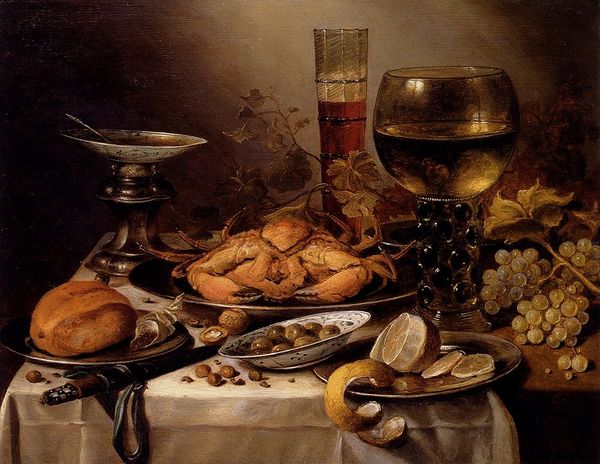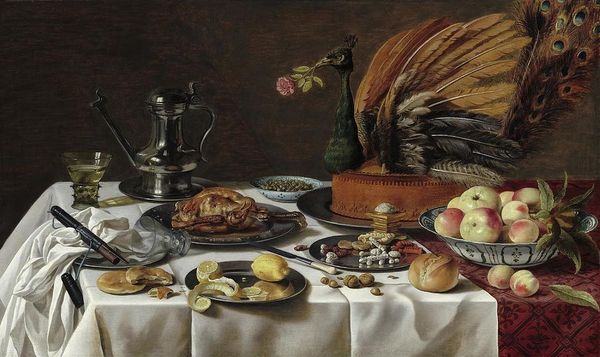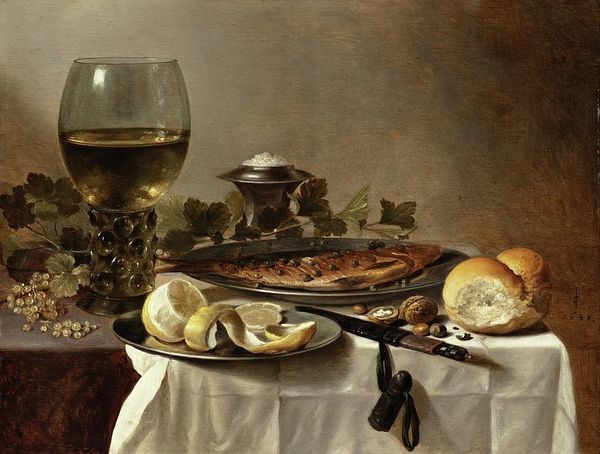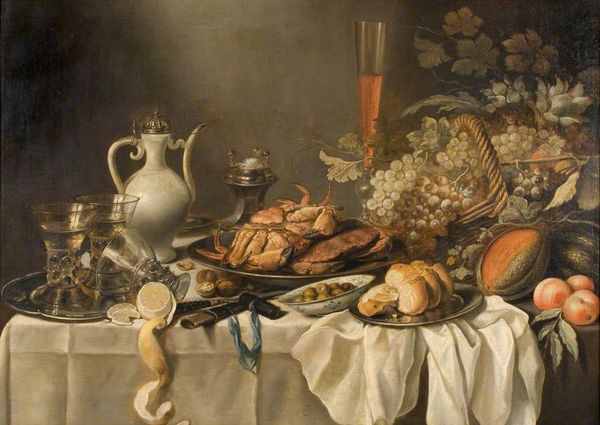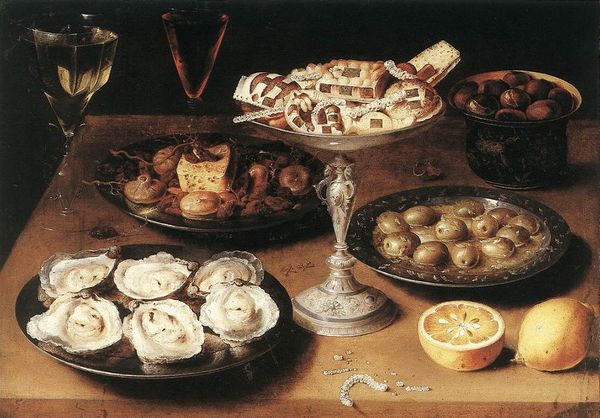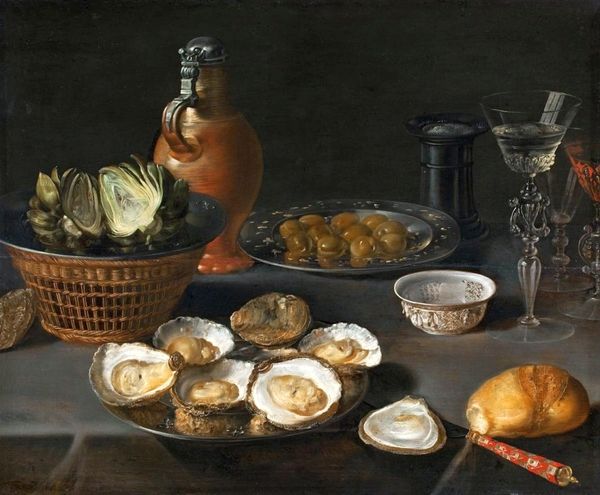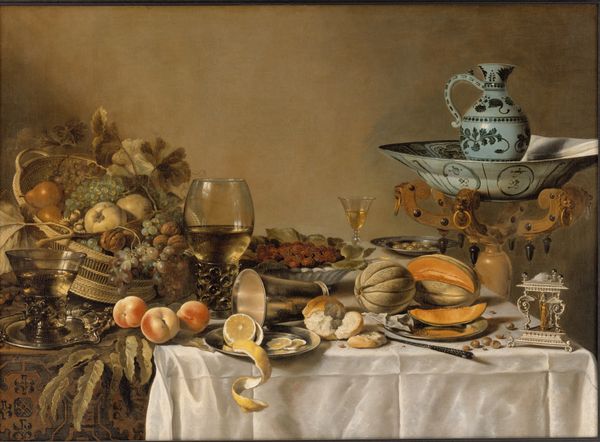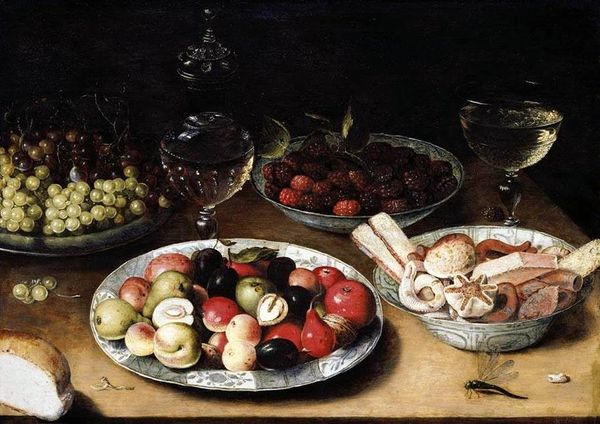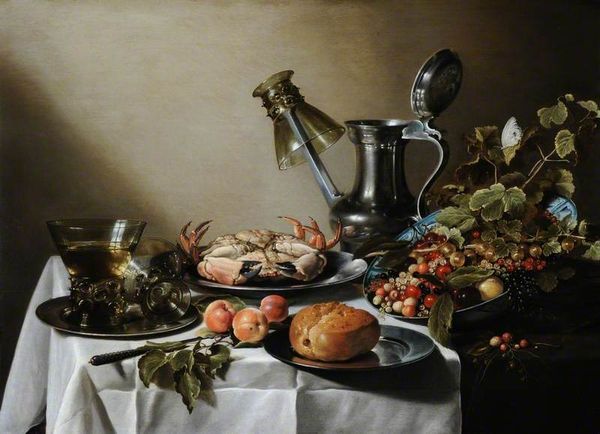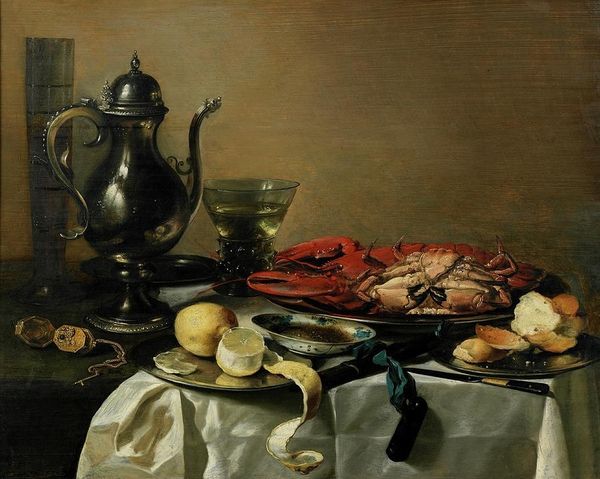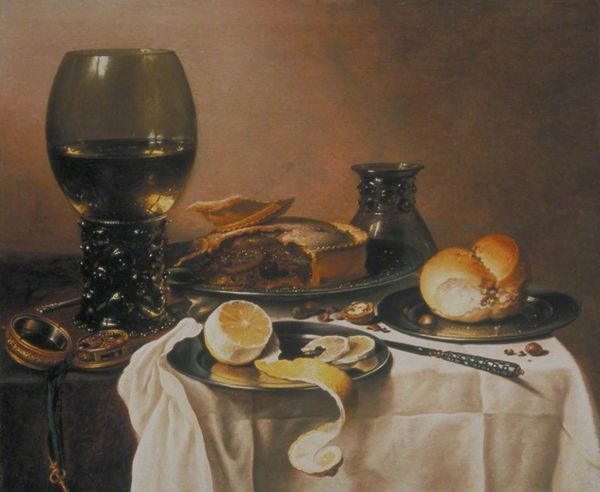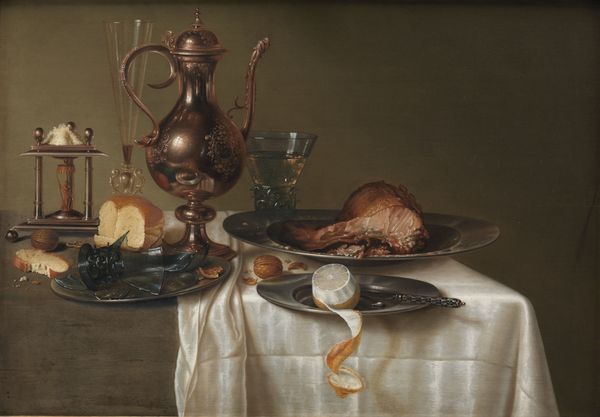
tempera, photography
#
food
#
narrative-art
#
baroque
#
tempera
#
dutch-golden-age
#
photography
#
oil painting
#
sculpting
Dimensions: 75 x 132 cm
Copyright: Public domain
Editor: Pieter Claesz’s “Still Life with a Turkey Pie,” from 1627, is striking in its detailed depiction of a feast. The textures are incredible! What do you make of this abundance? Curator: What strikes me immediately is the *labor* embedded in each element. Think of the silversmithing of the pitcher, the cultivation and harvesting of the grapes, and the, shall we say, procuring and preparation of the turkey. This isn't just about showing wealth, it's about demonstrating a command over materials and production processes. What societal structures made such lavish displays possible? Editor: That's a good point, thinking about the actual labor involved... It's easy to just see "fancy feast." Is he commenting on wealth disparity, then? Or celebrating Dutch prosperity? Curator: Perhaps both! Notice how the items are arranged: not perfectly, but with a kind of staged casualness. What does that imply about the consumption of goods, the disposal of waste, the visual cues? Think about the rise of Dutch mercantile power and its effect on material culture and even artistic production. Was this excess considered wasteful, ostentatious, beautiful, or all three? And for whom? Editor: So, the arrangement itself speaks to a new kind of consumer culture that’s emerging? It seems less about careful display of precious items and more about… well, consuming. Curator: Precisely! And consuming isn't just about eating, drinking, and using; it's also about representing. How does this painted representation relate to the act of acquisition and consumption itself? Editor: I hadn’t considered the painting as an act of consumption, too! It gives me a new perspective on still life as a genre, almost a commercial for materialism. Curator: Exactly. Now, start to look at all art with that awareness. What materials? What labor? Whose consumption is being represented?
Comments
rijksmuseum about 2 years ago
⋮
The Flemish painter Pieter Claesz was just one of many artists who emigrated to the Northern Netherlands in the beginning of the 17th century. This table abounds with luxurious products, among them Asian objects. Especially eye-catching are the porcelain plate and the nautilus shell. Even in unexpected objects, the presence of Asia is implicit – for instance in savoury pies, which contain ingredients such as cinnamon, mace, cloves and ginger.
Join the conversation
Join millions of artists and users on Artera today and experience the ultimate creative platform.
